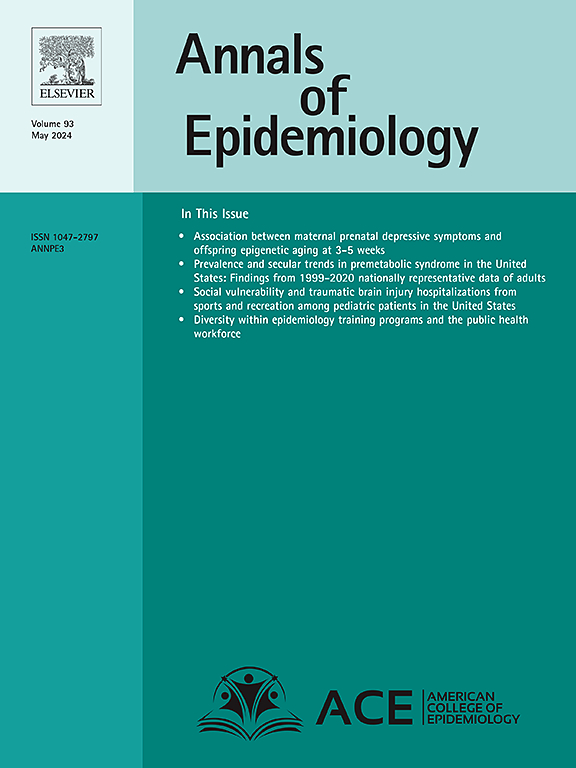应用可运输性和概括性分析的系统回顾:景观分析。
IF 3.3
3区 医学
Q1 PUBLIC, ENVIRONMENTAL & OCCUPATIONAL HEALTH
引用次数: 0
摘要
可移植性和泛化性分析是一种定量评估外部有效性的新型因果推理方法。目前,尚不清楚这些分析如何应用于实践。为了描述应用和方法的特征,我们利用PubMed、CINAHL和Embase的系统文献检索,辅以手工检索,进行了应用可移植性的景观分析和推广分析。我们确定了68篇文章,描述了83个独特的源-目标数据对的可移植性和概括性分析,并报告了99个不同的分析。大多数源数据集和目标数据集收集于美国(n=63/83, 75.9%;n=59/83,分别为71.1%)。这些方法最常用于将RCT结果转移到观察性研究中(n=38/83;45.8%)或另一项RCT (n=20/83;24.1%)。一些研究在标准应用之外使用了可转移性分析,例如,确定效果修饰因子或在随机对照试验中校准测量结果。使用体重和个体水平患者资料的方法最为常见(n=56/99, 56.5%;N =80/83,分别为96.4%)。不同研究的报告质量各不相同。可运输性分析具有广泛的应用,包括通过提高证据相关性来支持决策,通过识别上下文效应修饰因子和校准结果测量来改进试验设计。需要努力使这些方法的分析和报告标准化,以提高透明度和吸收度。本文章由计算机程序翻译,如有差异,请以英文原文为准。
Systematic review of applied transportability and generalizability analyses: A landscape analysis
Transportability and generalizability analysis are novel causal inference methods that quantitatively assess external validity. Currently, it is unclear how these analyses are applied in practice. To characterize applications and methods, we conducted a landscape analysis of applied transportability and generalizability analyses using a systematic literature search of PubMed, CINAHL and Embase supplemented with hand-searches. We identified 68 publications describing transportability and generalizability analyses conducted with 83 unique source-target dataset pairs and reporting 99 distinct analyses. The majority of source and target datasets were collected in the US (n = 63/83, 75.9 %; and n = 59/83, 71.1 %, respectively). These methods were most often applied to transport RCT findings to observational studies (n = 38/83; 45.8 %), or to another RCT (n = 20/83; 24.1 %). Several studies used transportability analysis outside the standard application, for example to identify effect modifiers or calibrate measurements within an RCT. Methods that used weights and individual-level patient data were most common (n = 56/99, 56.5 %; n = 80/83, 96.4 %, respectively). Reporting quality varied across studies. Transportability analysis has a wide range of applications including supporting decision-making by improving evidence relevance and improving trial design by identifying contextual effect modifiers and calibrating outcome measurements. Efforts are needed to standardize analysis and reporting of these methods to improve transparency and uptake.
求助全文
通过发布文献求助,成功后即可免费获取论文全文。
去求助
来源期刊

Annals of Epidemiology
医学-公共卫生、环境卫生与职业卫生
CiteScore
7.40
自引率
1.80%
发文量
207
审稿时长
59 days
期刊介绍:
The journal emphasizes the application of epidemiologic methods to issues that affect the distribution and determinants of human illness in diverse contexts. Its primary focus is on chronic and acute conditions of diverse etiologies and of major importance to clinical medicine, public health, and health care delivery.
 求助内容:
求助内容: 应助结果提醒方式:
应助结果提醒方式:


